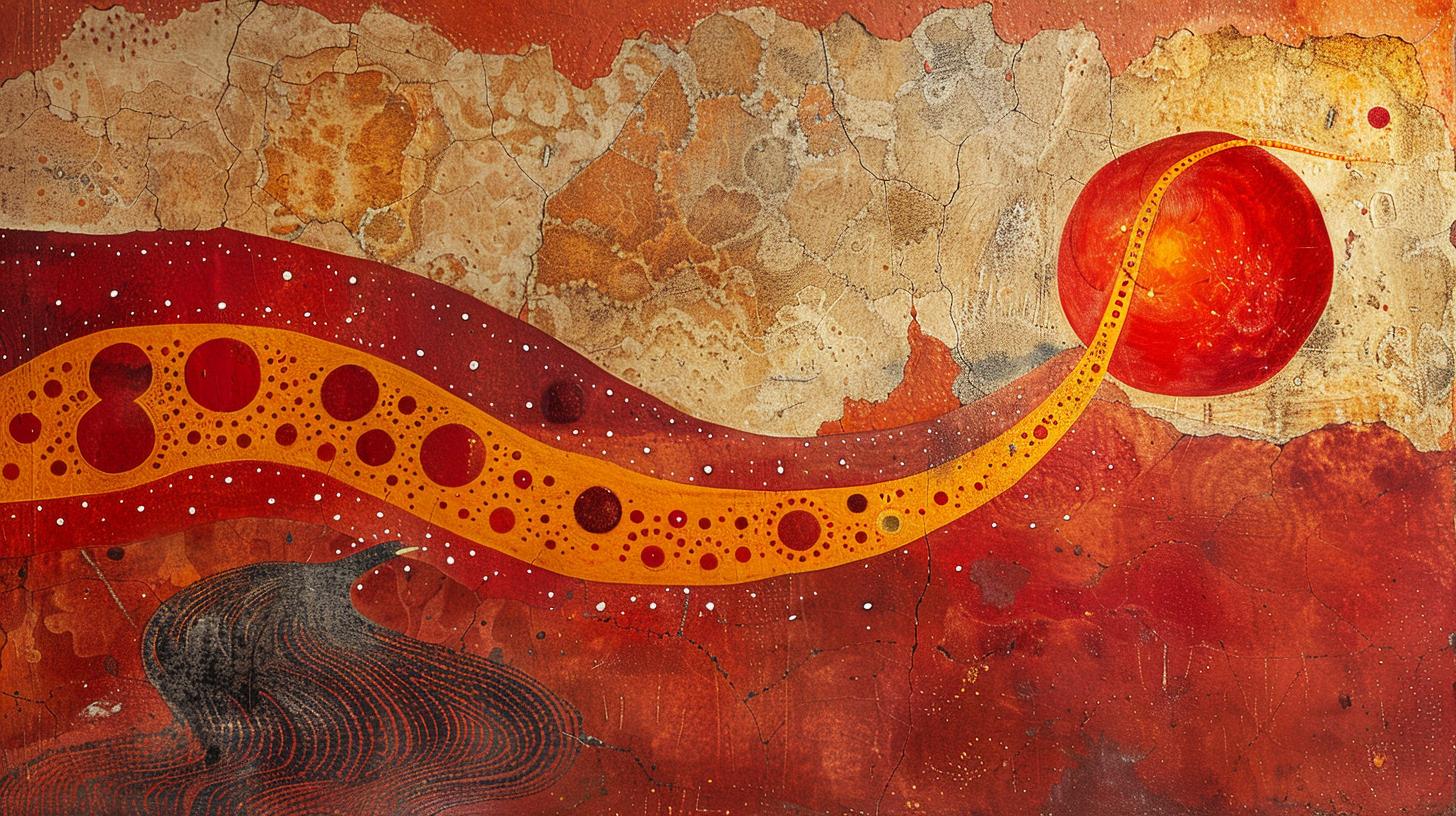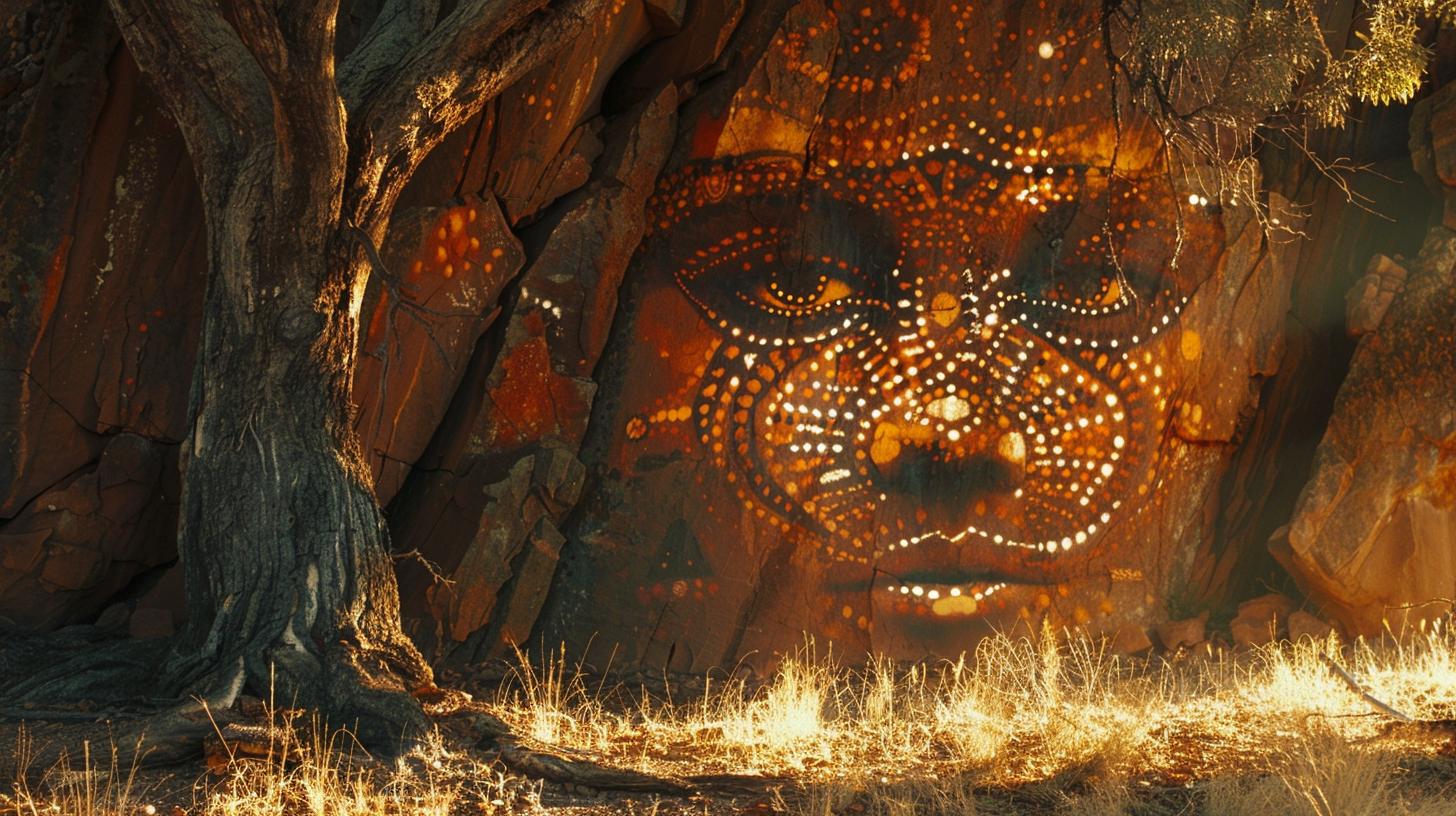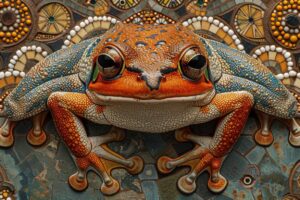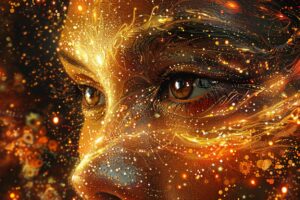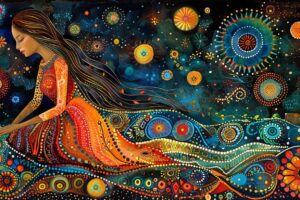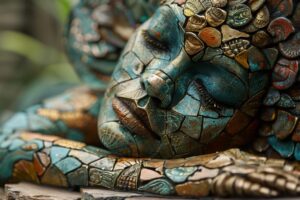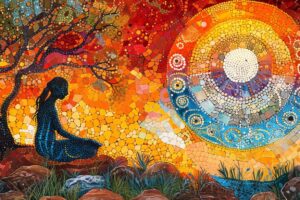Wandjina Creation Story: Unveiling the Myth of the Rain Spirit
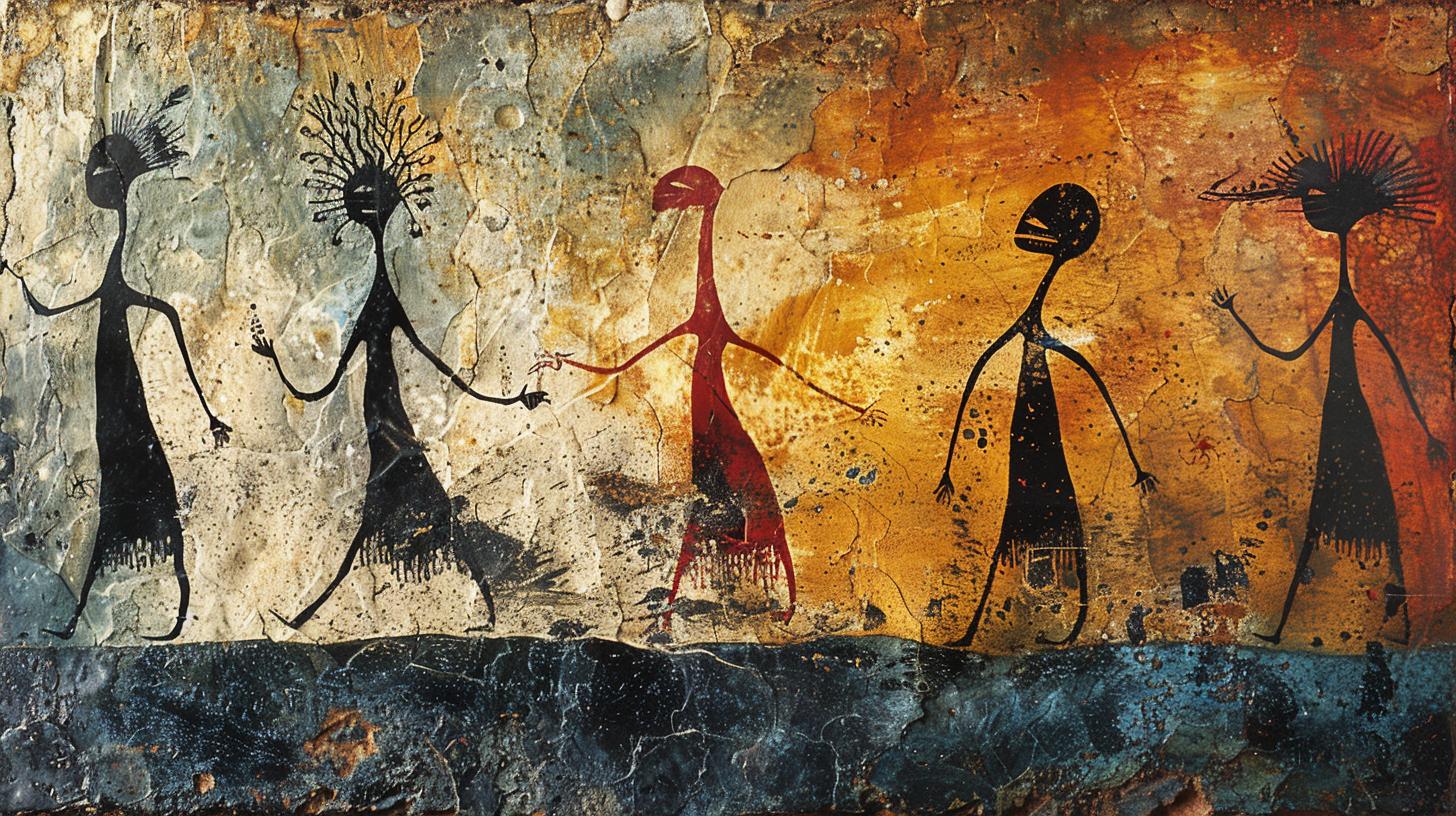
Wandjina, a powerful rain spirit in Aboriginal culture, is associated with creation and renewal of the land. Believed to control rainfall, rituals and songs are performed to attract rain and ensure fertility.
Originating from a Creation myth, Wandjina is credited with introducing law, culture, and language to his people. Artistically depicted in rock paintings and contemporary art, Wandjina’s images symbolize his enduring significance and connection to nature.
The Significance of Wandjina in Aboriginal Culture
Rain Spirit and Creation
Wandjina, the rain spirit in Aboriginal culture, holds a central role in the creation and renewal of the land. Believed to control rainfall, Wandjina’s presence is linked to the regeneration of the Earth.
Role in Regeneration of the Land
Wandjina’s influence on the land goes beyond mere weather control. The rain that Wandjina brings is seen as essential for the fertility and growth of the Earth, ensuring the sustenance of life and resources.
Transfer of Energy through Line of Power
It is believed that the features of Wandjina’s face represent various climatic elements, such as thunderstorms. The energy channeled through a line of power between the eyes of Wandjina symbolizes the essential connection between this spiritual entity and the natural world.
Power of Rainmaking
Wandjina’s power lies in its ability to send rain, a vital element for sustaining life. Rituals and songs performed in honor of Wandjina during dry seasons seek to evoke rainfall and alleviate the conditions of drought.
Influence on Fertility of the Earth
The rain brought by Wandjina is not merely water; it is a life-giving force that promotes the fertility of the land. The fertility of the Earth is intricately tied to the rain spirit’s ability to provide nourishment for all living beings.
Rituals and Songs for Rain
During times of drought, rituals and songs dedicated to Wandjina are performed to beseech the rain spirit for its life-giving gift. These sacred practices emphasize the importance of the relationship between Wandjina and the Earth’s fertility.
Wandjina in Creation Mythology
Origin and Descendants
The narrative of Wandjina in Aboriginal mythology delves into the origin and lineage of this powerful rain spirit. Idjair, the first Wandjina, holds a central role in the creation story, believed to be the progenitor of all subsequent Wandjinas.
The significance of Wandjina Wallungunder, the first son, lies in his creation of the Earth and its inhabitants, including the Gyorn Gyorn people.
Idjair – The First Wandjina
Idjair stands as the foundational figure in Wandjina’s creation myth, embodying the essence of the rain spirit and representing the beginning of the lineage of powerful spirits associated with weather and fertility.
The tales surrounding Idjair emphasize his paramount role in shaping the natural world and bestowing essential knowledge upon his descendants.
Wandjina Wallungunder and Gyorn Gyorn People
Wandjina Wallungunder, as the first offspring of Idjair, plays a crucial part in the establishment of the Earth and the emergence of life, particularly the Gyorn Gyorn people who are considered the first humans created by this divine entity.
The relationship between Wandjina Wallungunder and the Gyorn Gyorn people underscores the interconnectedness of spirituality, creation, and human existence in Aboriginal cosmology.
Wandjina’s Contribution to Law and Culture
Wandjina’s influence extends beyond the realm of natural phenomena to the foundation of law, culture, and language within Aboriginal societies. Through his teachings and actions, Wandjina introduced essential laws governing human behavior, cultural practices, and linguistic expressions.
His relationship with the first human beings, the Gyorn Gyorn people, shapes the understanding of traditional customs and societal organization among Aboriginal communities.
Introduction of Law, Culture, and Language
The narrative surrounding Wandjina’s contribution to law and culture emphasizes the role of this divine entity in establishing frameworks for societal organization, moral conduct, and artistic expression. The introduction of laws, cultural norms, and language by Wandjina reflects a deep connection between spiritual beliefs, governance structures, and communal practices within Aboriginal traditions.
Relationship with First Human Beings
The interaction between Wandjina and the Gyorn Gyorn people epitomizes the relationship between divine beings and humanity, illustrating the shared history, responsibilities, and interconnectedness between the spiritual realm and human existence.
Wandjina’s guidance, teachings, and presence among the first human beings shape the cultural identity and societal development of Aboriginal communities through the perpetuation of traditions and values.
Artistic Representation of Wandjina
Artistic representation of Wandjina is a central aspect of Aboriginal culture, reflecting the spiritual connection between the rain spirit and the natural world.
Cultural Artifacts and Historical Context
Wandjina images are considered cultural artifacts, capturing the essence of the rain spirit in Aboriginal lore. These depictions provide insight into the historical context and significance of Wandjina in indigenous culture.
Comparison with Gwion Gwion Paintings
When comparing Wandjina images to Gwion Gwion paintings, distinct differences in style and symbolism emerge. While Gwion Gwion art focuses on intricate designs, Wandjina paintings emphasize the power and presence of the rain spirit.
Contemporary Aboriginal Artists’ Work
Contemporary Aboriginal artists continue the tradition of depicting Wandjina in their work, showcasing the enduring relevance of this spiritual figure in modern art. These artists explore new ways to interpret and represent Wandjina, keeping the tradition alive.
Preservation of Wandjina Images
Efforts to preserve Wandjina images are crucial for maintaining the cultural heritage and spiritual significance associated with the rain spirit. Conservation initiatives seek to protect these sacred representations for future generations.
Symbolism and Transcendence through Art
Wandjina images hold deep symbolism, representing not only the rain spirit but also the interconnectedness of all living beings with the natural world. Through art, this symbolism transcends time and culture, conveying universal themes of creation and spirituality.
Environmental Factors and Conservation Efforts
Environmental factors pose challenges to the preservation of Wandjina images, as natural elements can impact the longevity of these sacred artworks. Conservation efforts aim to mitigate these factors and ensure the continued existence of Wandjina representations in their original form.
.

